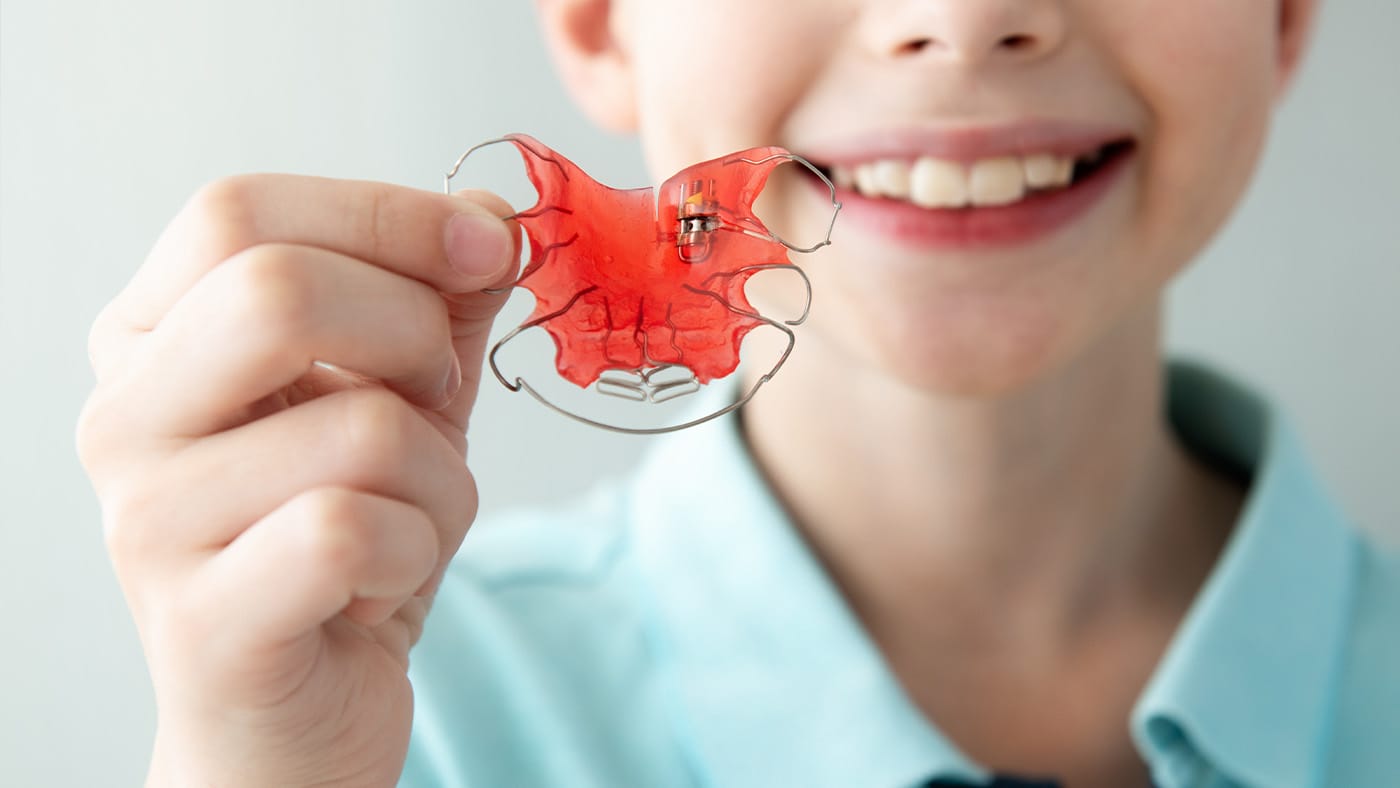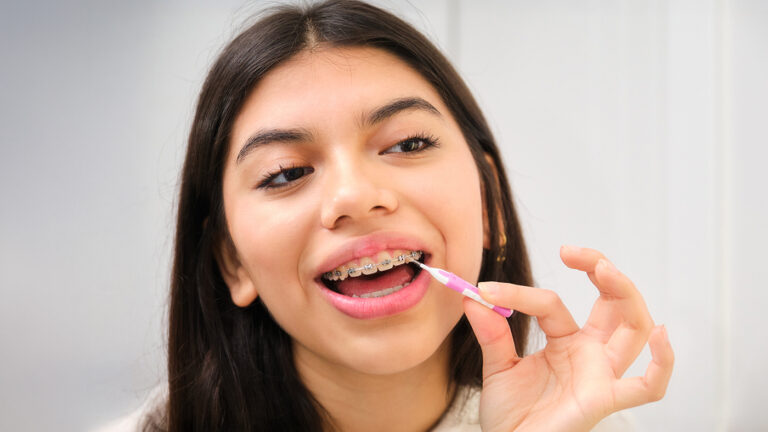About half of all children will have braces at some point in their lives. Depending on the severity of the misalignment, they will wear braces for between one and two years. That might seem like a long time, but before you know it, the braces will be off, and your child will have the beautiful smile they’ve been waiting for.
It’s a cause for celebration, but your child’s orthodontic journey doesn’t stop there. Even after the brackets and wires are removed, they need to wear a retainer in order to keep that great smile and good alignment.
Wearing a Retainer After Braces
Moving your child’s teeth and jaw into the desired position is only the most visible part of orthodontic treatment. Using a retainer after braces are removed ensures everything stays in the right place, and none of the orthodontic work is undone.
The bone that holds your child’s teeth in place is constantly remodeling due to growth, allowing teeth to shift or relapse over time. That’s an ordinary process that braces takes advantage of: applying pressure and slowly moving your child’s teeth into a different position. Once the active phase of treatment is complete, the surrounding bone remains malleable and requires time to settle into a stable configuration. Retainers provide support, holding everything in place.
Even after the initial healing period, natural forces such as the pressure of chewing, speaking, and swallowing can cause the teeth to shift throughout your child’s life. A retainer can protect your child’s treatment long-term by counteracting these everyday pressures. Because the position of your child’s teeth will continue to change, along with the rest of their body, throughout their lives, there’s no cutoff line for using a retainer. The American Association of Orthodontists explains that many patients wear a retainer nightly for the rest of their lives, or as we like to say, “Nighttime for Lifetime”
Different Types of Retainers
Orthodontic retainers are used after braces or aligners to maintain your new smile and prevent teeth from shifting back. Here are the two main types of retainers:
Clear retainers
Similar to clear aligners, the most common retainers are made of thin, transparent plastic and fit snugly over the teeth like a mouthguard. They are popular because they are nearly invisible, making them an attractive choice for those who want something discreet. They are also relatively comfortable and easy to wear consistently.
Acrylic/wire retainers
These are the more traditional removable retainers that are made with colored acrylic and have wires with loops attached to hold the retainer in place.
Permanent retainers (fixed)
Some patients are fitted with a permanent retainer made of thin wire that is bonded directly to the back of their teeth. Because they’re attached to the teeth, they provide continuous support. This makes them ideal for people who may forget or neglect to wear a removable retainer. However, fixed or bonded retainers do require a higher lever of maintenance (brushing, flossing etc.) than removable retainers.
Your orthodontist may even recommend a combination of fixed and/or bonded retainers, depending on your child’s specific needs.
Taking Care of Your Retainer
A retainer is one of the best ways to maintain your child’s orthodontic treatment and protect their smile long-term. With that in mind, it’s essential for kids to take good care of their retainer so it lasts a long time.
Store retainers in a protective case
The orthodontist/assistant will walk your child through how to use their retainer and how often they should wear it. Anytime your child’s retainer isn’t in their mouth, it should be in its protective case. Keeping it in a case makes it less likely that their retainer will be lost or damaged. It’s a good idea to keep spare cases in a backpack or a bag in case the retainer needs to be removed on the go.
Protect retainers from extreme temperatures
Avoid leaving your child’s retainer in a car on hot days or in other hot environments. Extreme temperatures can affect the plastic parts, making the retainer less effective.
Keep retainers clean
The orthodontist/assistant will walk you and your child through basic retainer care instructions, including how to keep the retainer clean. Because it spends so much time in your child’s mouth, the retainer is exposed to the same acids and bacteria and needs to be cleaned regularly. While your child is brushing their teeth, ensure they brush their retainer with a soft-bristled brush and a small amount of toothpaste. If your child has a permanent retainer, interproximal brushes and floss can help get into the spaces between their teeth and the wire.
Eat retainer-friendly foods
After their braces are removed, kids can generally return to a more unrestricted diet, but it’s still best to avoid hard or sticky foods that can damage retainers. If your child has a fixed retainer, they should be careful when eating hard or sticky foods to avoid damage. If your child’s retainer is removable, it’s usually recommended that they are removed before eating and brushing. Removing a retainer while eating reduces the risk that it gets damaged or stained over time.
Check-in with your orthodontist
No matter how well your child takes care of their retainer, it will eventually wear out and need to be replaced. Additionally, your child’s mouth will continue to develop throughout their life, and their retainer may need to be modified to keep pace with this development. With periodic checkups, an orthodontist can evaluate, repair, and replace retainers as necessary.
Along the way, the Wee Care orthodontic providers are here to answer any questions, discuss options, and provide guidance every step of the way.




